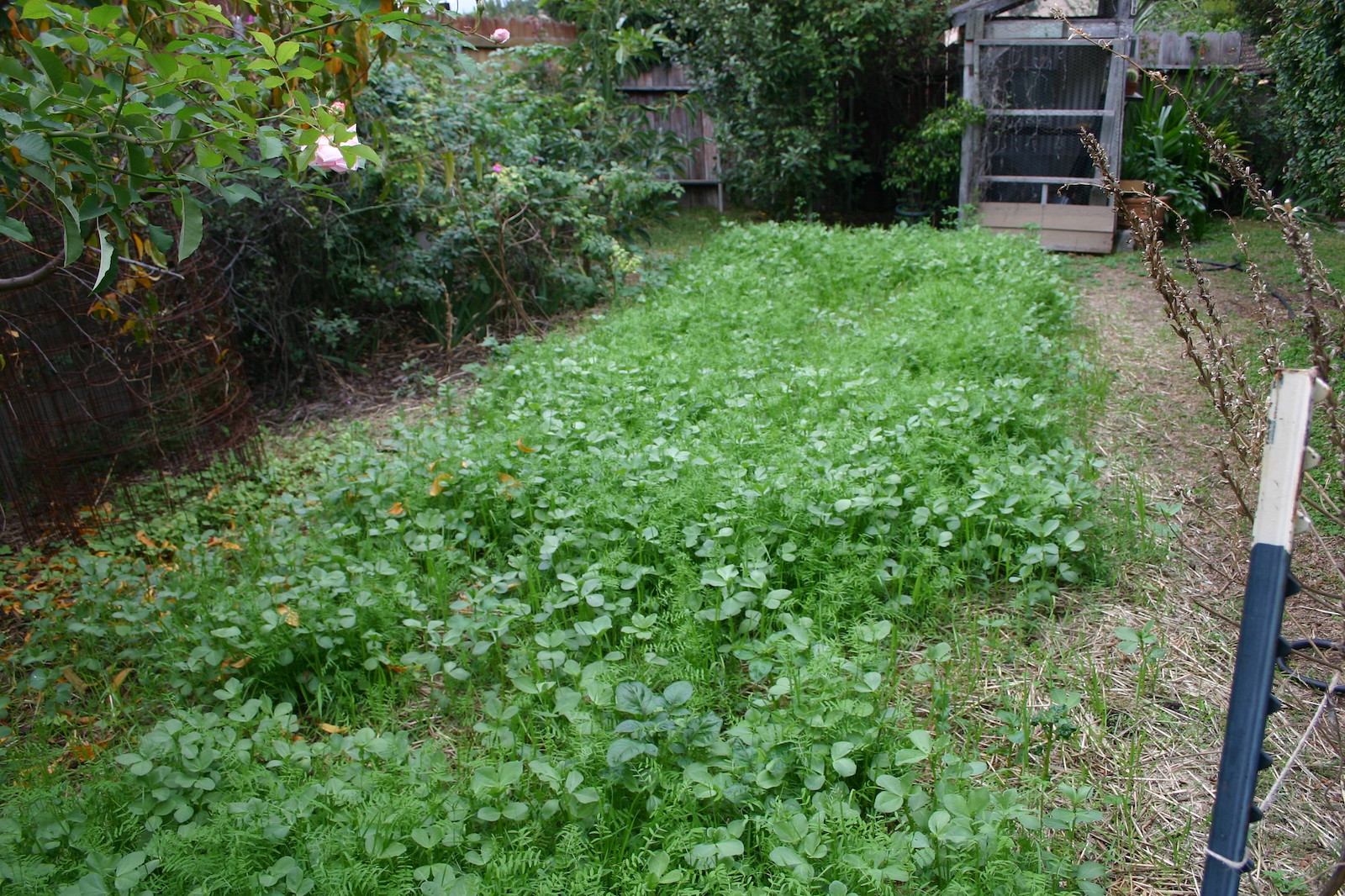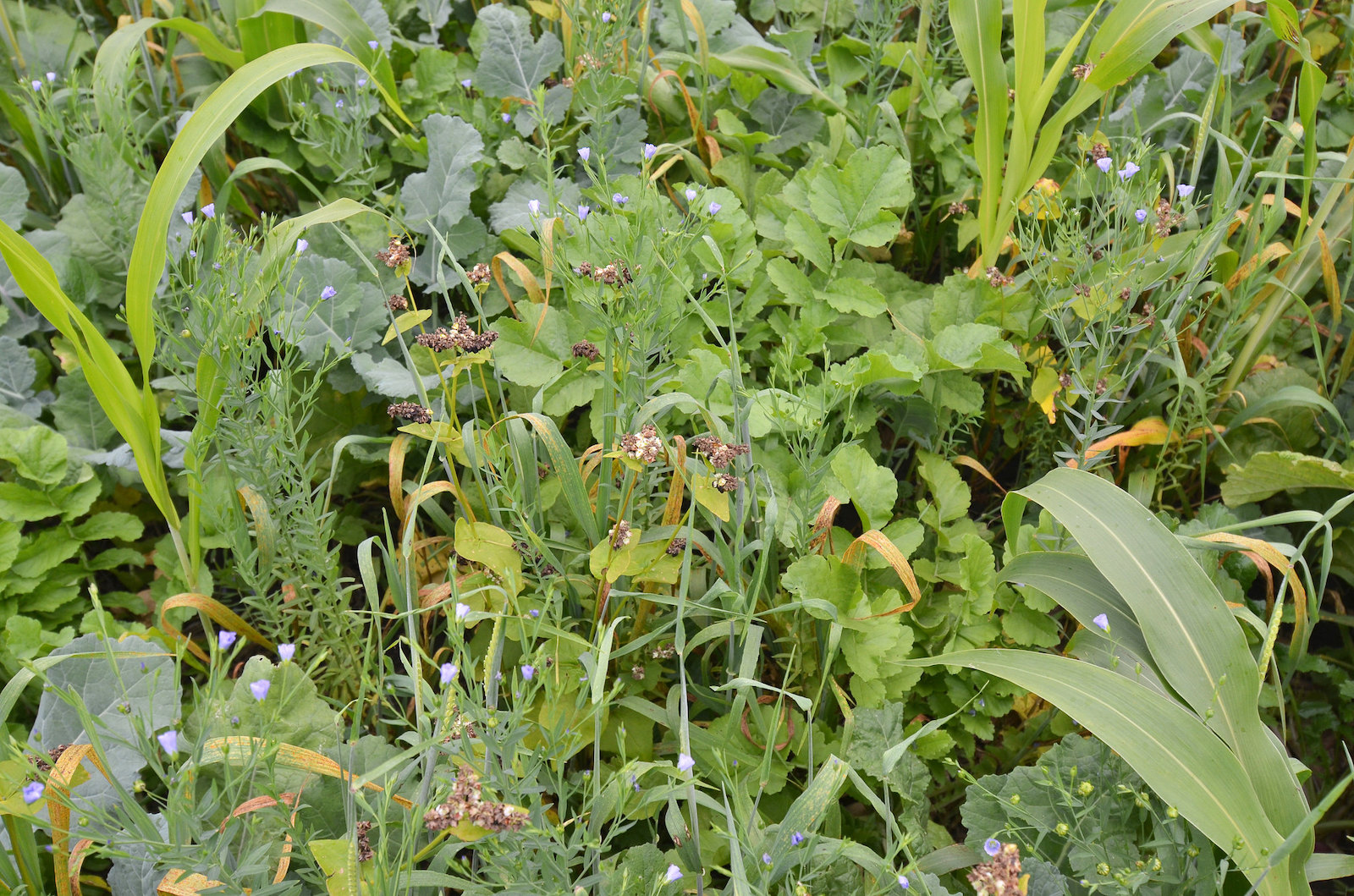Cereal rye cover crops on a farm in Carroll County, Iowa. NRCS/SWCS photo by Lynn Betts used under CC BY 2.0
Cover cropping is the use of plants like legumes and cereals to improve your soil when you’re not growing fruit and vegetables. This practice can have huge benefits for your garden by improving soil health, managing pests, and keeping weeds out of your garden.
What is cover cropping?
Cover cropping is one of the key components of regenerative agriculture, a term coined in the 1980s by the Rodale Institute. Conventional agriculture strips soil of its nutrients, then adds them back with chemical fertilizers. Over time, this practice leads to desertification and the loss of soil fertility. Fertilizer runoff creates algal blooms that destroy aquatic ecosystems and damage water sources.
In contrast to conventional agriculture, regenerative agriculture aims to use approaches that maintain and restore the health of soil and water without the use of heavy chemicals, so that farming practices can be sustained for generations to come.
Cover cropping is an important practice for maintaining and improving soil health. Cover crops are planted in soil that would otherwise be left bare. For example, in a raised bed, you’d plant cover crops when you aren’t actively growing crops - such as between growing seasons. Then, before planting, you cut down the cover crop, making space for your crops for the season.

A home garden in Altadena, California, planted with a mix of bell beans, winter peas, vetch, and oats as cover crops. Photo by djfrantic used under CC BY-NC-ND 2.0
How will it benefit your garden
First and foremost, cover crops reintroduce nutrients to the soil like a kind of natural fertilizer. After they’ve been cut down, the roots and leaves break down. According to the University of New Hampshire: “the decomposition process releases nitrogen; therefore adding organic matter to the soil increases your long-term supply of nitrogen, which is slowly released to your crop.” Legumes like field peas or hairy vetch are popular cover crops because they “fix” nitrogen, returning it to the soil even as they grow.
Plus, having plants in the ground protects soil from erosion and nutrient loss. And, cover crops can help improve the texture of your soil, making it nice and airy for growing plants in. Cover crops are also great for pollinators and predatory insects that eat pests. For example, some cover crops attract flower flies that eat aphids. Cover crops are sometimes referred to as green mulch because they fulfill many of the same functions as a mulch would by helping soil retain moisture and smothering weeds.
Planting
The plants you select will depend on when you are planting, where you’re located, and what you want to achieve. Different cover crops work best for different jobs. Legumes fix nitrogen. Plants with broader leaves work the best for blocking out weeds. Plants like oats can help make your soil less compacted. Because of this, most people plant a mix of legumes and cereals to capture the different benefits.
If you live in an area with killing frost, keep in mind that some cover crops are annual plants that die over winter. These won’t need to be mowed, as they will die out and decay on their own. Perennials will need to be turned into the soil in spring. This guide by Treehugger has a great breakdown of cover crops to plant when in different regions of the U.S.
You can make your own mix, or buy one premade. These mixes from Johnny’s and American Meadows have a range of plants some of which die off during winter to provide ground cover, and some of which keep blooming through to spring to keep adding nutrients to the soil. This winter kill mix from True Leaf Market won’t require any turning over as all the cover crop will die over the winter.

: A close up on a field in Vermillion, South Dakota, using a cover crop blend to prevent erosion and build soil health, including oats, barley, grasses, vetch, buckwheat, and turnips. Kurt Lawton via USDA NRCS South Dakota used under CC BY-SA 2.0
Turning over
Cover cropping is a good practice whenever you’re putting your garden to rest for a period. In warmer climates this might be a short winter, or simply while you’re not using a certain garden bed between crop plantings. In areas with colder winters, make sure you’re getting 4 weeks of growth before the frost really sets in. Planting right after your last harvest is a good rule of thumb.
Then, right before the cover crops go to flower, make sure you cut them down and turn them back into the earth. - this is when they have the most nutrients stored. For those of us with cold winters, this will be some time in the spring. It might happen sooner if you have milder winters! To keep them from growing back, you’ll cut the plants where the root meets the head of the plant. You can do this with a hand trimmer, weed wacker, mower, or flat head shovel. Chop up any big chunks of plant matter and turn them back into the earth with a hand rake.
Alternatively you can cut the plants and toss the tops into your compost pile and they’ll enrich your compost. Then once you’re ready to get planting the cover crops will no longer be visible, but they’ll be hard at work fertilizing your soil!
